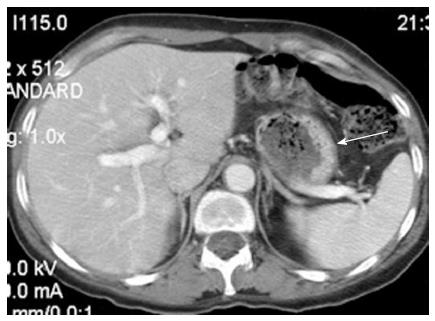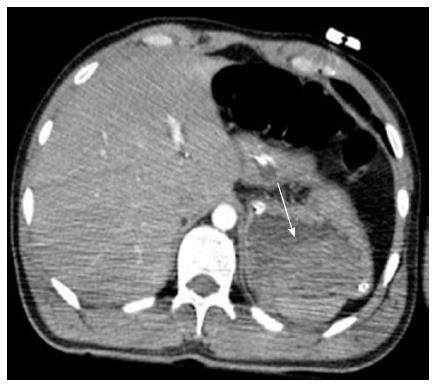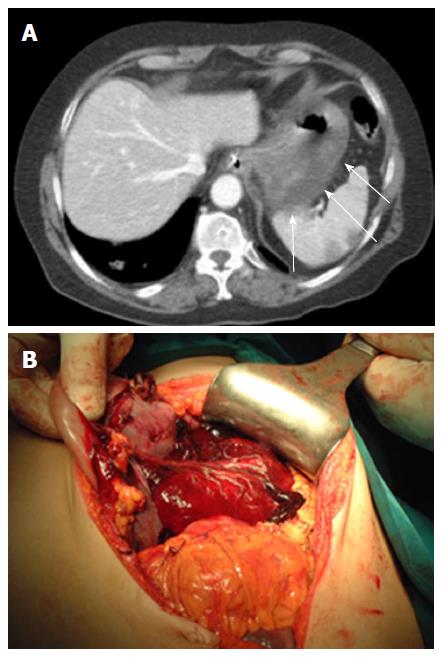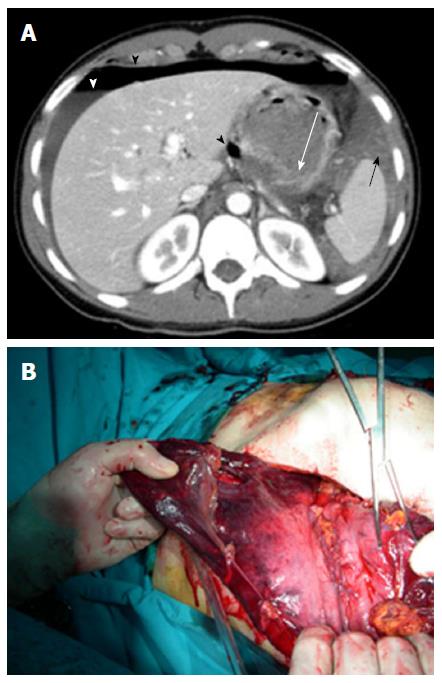Copyright
©The Author(s) 2017.
Figure 1 Wall thickening of the gastric body (arrow).
Surgery was not required. Grade 1 lesion.
Figure 2 Isolated gastric pneumatosis after abdominal trauma (arrows).
Spontaneous recovery. Grade 1 lesion.
Figure 3 Blood in the gastric lumen (arrow).
Follow-up without surgery. Grade 2 lesion.
Figure 4 Parietal hematoma.
A: Parietal hematoma: Thickening with high-attenuation in the external layer of gastric wall (arrows). Grade 3 lesion. Follow-up with subsequent surgery for worsening symptoms and peritoneal reaction; B: External layer gastric wall hematoma confirmed at surgery.
Figure 5 Gastric rupture.
A: Gastric wall rupture (white arrow): Peritoneal fluid (white arrowhead) with homogeneous hyperdense components from blood (black arrow), pneumoperitoneum with a bubble of gas located close to the gastric lesion (black arrowheads). Grade 4 lesion; B: Gastric rupture confirmed at surgery.
- Citation: Solazzo A, Lassandro G, Lassandro F. Gastric blunt traumatic injuries: A computed tomography grading classification. World J Radiol 2017; 9(2): 85-90
- URL: https://www.wjgnet.com/1949-8470/full/v9/i2/85.htm
- DOI: https://dx.doi.org/10.4329/wjr.v9.i2.85













